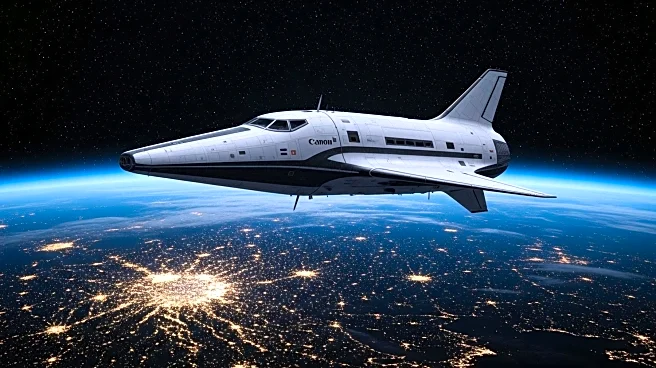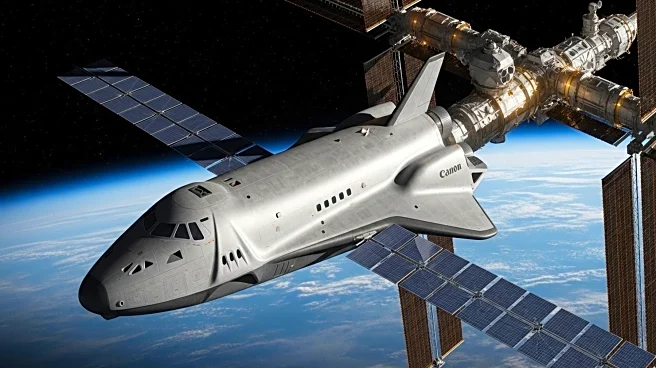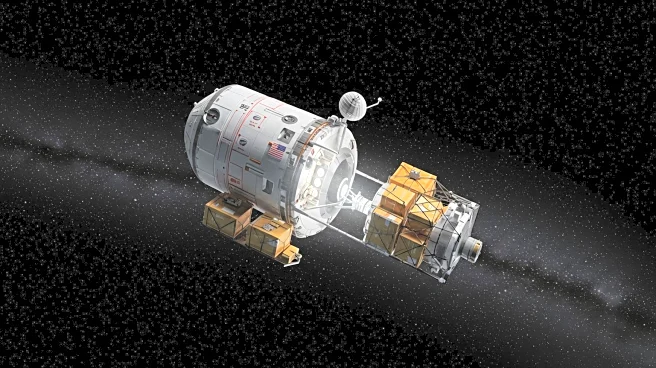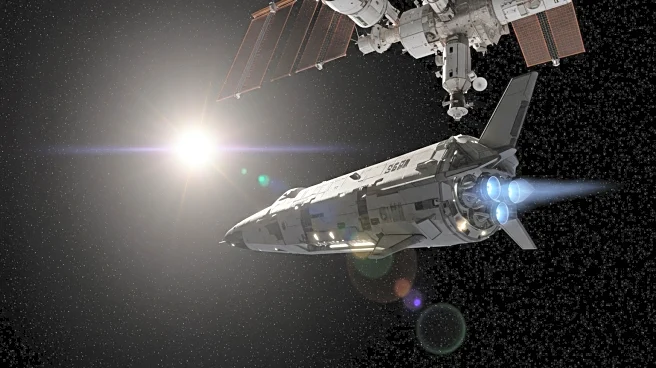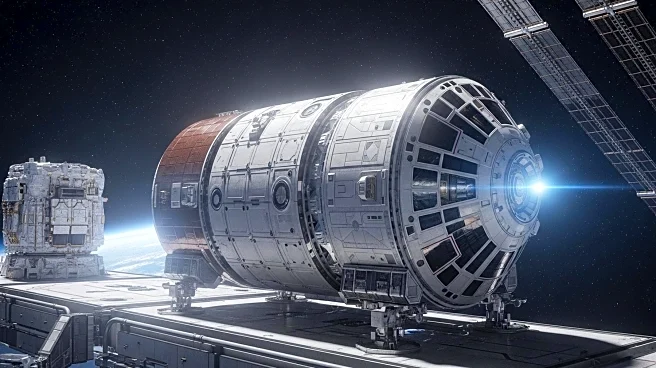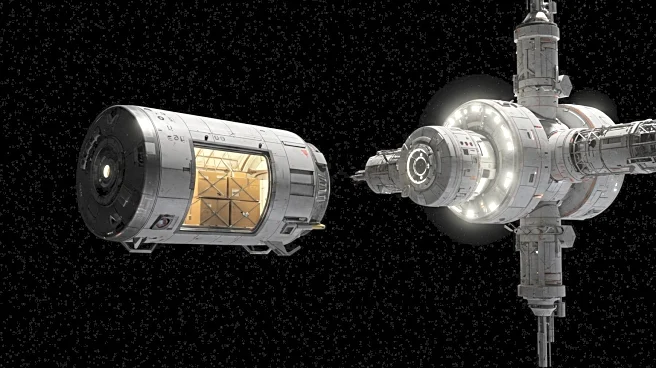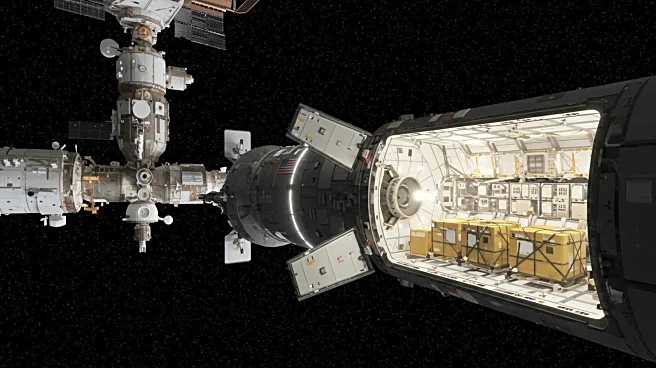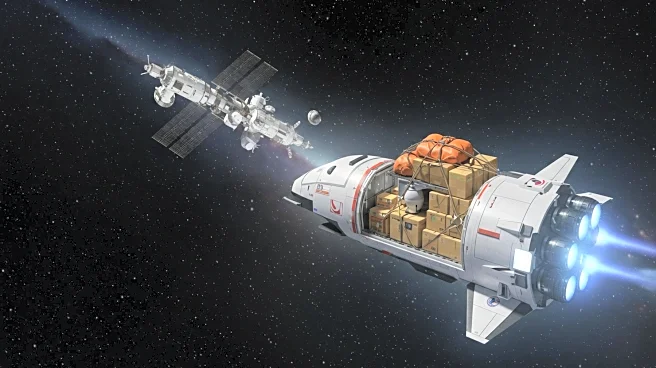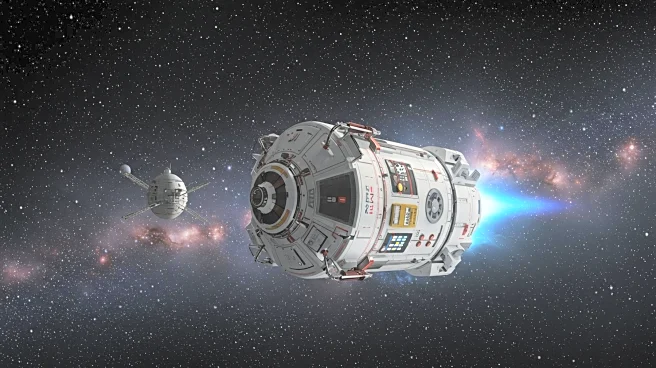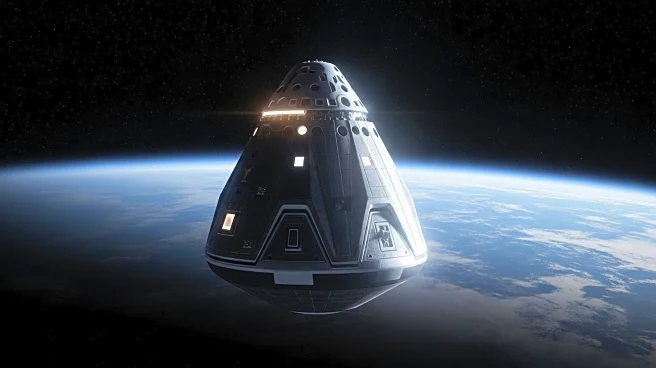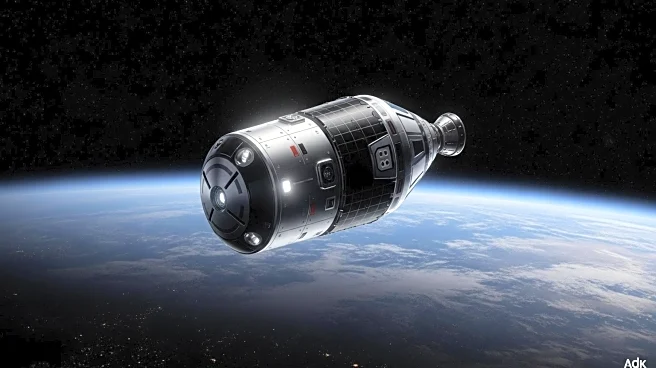What's Happening?
SpaceX has launched its Dragon spacecraft to the International Space Station (ISS) with a new propellant system designed to help maintain the station's orbital altitude. The ISS, which has been in orbit for over 26 years, experiences atmospheric drag that causes it to lose altitude over time. Traditionally, reboost maneuvers have been performed using the station's own thrusters or with assistance from Russia's Progress spacecraft and Northrop Grumman's Cygnus. Starting in September, NASA will utilize SpaceX's Dragon vehicle for this purpose. The Dragon spacecraft, carrying over 5,000 pounds of supplies, includes a boost kit in its trunk for a reboost demonstration. This kit will fuel two Draco engines to adjust the ISS's altitude through a series of burns planned throughout the fall.
Why It's Important?
The introduction of SpaceX's Dragon vehicle for reboost maneuvers represents a significant advancement in maintaining the ISS's operational status. By diversifying the methods available for orbital adjustments, NASA ensures the longevity and stability of the ISS, which is crucial for ongoing scientific research and international collaboration in space. The ability to use multiple spacecraft for reboost and attitude control enhances the resilience of the orbital complex, potentially extending its operational life until its planned retirement in 2030. This development also underscores SpaceX's growing role in supporting NASA's missions and the broader space exploration efforts.
What's Next?
The Dragon spacecraft will remain docked to the ISS until December, marking the longest period for a cargo mission. During this time, it will perform the planned reboost maneuvers. The boost kit used in this mission is a smaller version of one that SpaceX is developing for the ISS's final deorbit. As the ISS approaches its retirement, NASA plans to use a Dragon spacecraft to execute a series of deorbit burns, ultimately leading to the station's descent and burn-up in Earth's atmosphere.
